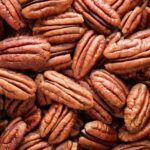Argentina poised to develop Southern Hemisphere’s earliest cherries

In a trial conducted in Jujuy, Argentina, led by the Mendoza company Güizzo Frutas Frescas S.A., researchers Dr. Viviana Curzel and producer Oscar Machuca obtained the first results for an early cherry harvest on September 24.
Dr. Curzel, director of the Jujuy National University’s Fruit Growing Research Center, stated that this is a significant breakthrough, as the harvest is several weeks ahead of the earliest cherry productions in Mendoza, Argentina, and Ovalle, Chile. These typically occur around week 42 in mid-October.
The study focused on a 2,000-plant experimental block of early-bearing cherry varieties, including traditional cultivars like Brooks and Lapins, as well as licensed varieties such as Zaiger's Royal series and Nimba and Pacific Red. The Royal Lee variety from the Zaiger program was the first to be ready for harvest on September 24, with soluble solids up to 21° Brix.
The trial site in Monterrico has optimal conditions for ultra-early, low-chill production and short cycles. In addition to cherries, the block contains peach, nectarine, and plum cultivars with harvests starting in early September.

Over the 24-month study period, the researchers observed that certain cherry cultivars can advance the harvest to the last week of September, as demonstrated by these initial results. Future work will focus on improving dormancy management, timing of cultivars, and determining the best agronomic practices for this region.
The researchers believe that new low-chill cherry varieties being tested in early production areas of Chile and South Africa could also have great potential for adaptation in this northern Argentinian region. This would shift the current harvest window from weeks 42/43 to weeks 39/40.
The temperate valleys of Jujuy in the interior and the extreme north of Argentina are ideally suited for producing ultra-early peaches. This region has the necessary infrastructure to support their cultivation, including frost protection methods like micro-spraying. Additionally, the area boasts post-harvest technology such as pre-cooling packing facilities and appropriate cold conditioning.
The key advantages of this area for early stone fruit production are its mild, short winters and monsoon-type rainfall patterns. These climatic conditions align with the flowering, growth, and development stages of the fruit trees, providing high sunlight exposure and low rainfall - factors that contribute to the exceptional sweetness and color of the early harvests.

However, challenges remain in further optimizing management techniques to accelerate the plants' entry into productivity and control vegetative and root growth surges during the summer months. The physiology and phenology of the fruit trees in Jujuy differ significantly from those in Mendoza or Patagonia, requiring specialized field management approaches. Adaptability studies have identified cultivars with greater plasticity that show strong suitability for this unique growing region, even with lower chilling hour requirements.
Growers in Jujuy have employed various management practices to induce dormancy, such as early defoliation, the use of hydrogenated cyanamide, incisions, and plant growth regulators to stimulate lateral branching. These techniques have helped enable the ultra-early harvests that distinguish this temperate valley region.
Photographs courtesy of Dr. Curzel, director of the Jujuy National University’s Fruit Growing Research Center.









































